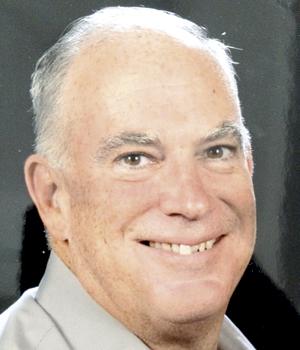More than most cities, Montgomery, Ala., remains rooted in the past even as it steps gingerly into the future. Outside town, large highway signs direct visitors to the First White House of the Confederacy. In town, a historical marker shows where, in 1955, the modern Civil Rights movement began, with Rosa Parks's refusal to give up her bus seat to a white man.
On April 23, Montgomery marked the annual Confederate Memorial Day - a state holiday - to honor those who died defending slavery.
Later that same week, Montgomery celebrated something new: the opening of two sites dedicated to shedding fresh light on the legacy of slavery.
On April 26, Bryan Stevenson, a Milton native and executive director of the Equal Justice Initiative, opened both the organization's Legacy Museum and the National Memorial for Peace and Justice.
A graduate of Cape Henlopen High School and Harvard Law School, Stevenson has spent most of his adult life defending death-row prisoners, a story he tells in his best-selling book "Just Mercy."
My wife and I traveled to Montgomery for the opening. Though boasting a population of 200,000 - well over twice the size of Delaware's largest city - the state capital retains the low-lying skyline of a much smaller town. Montgomery is steeped in American history, not all of it related to the Civil War and civil rights. Two giants of 20th century popular music, Hank Williams and Nat King Cole, called Montgomery home. Novelist F. Scott Fitzgerald lived there briefly with Zelda, in a house that now serves as a museum.
The Legacy Museum occupies a 19th century commercial structure a couple of blocks from the Alabama River. Before the Civil War, slaves were discharged at the docks and marched up Commerce Street to buildings such as the one that now houses the museum. The museum's entry-room wall bears an inscription, "You are standing on a site where enslaved people were warehoused."
The word "warehoused" sounds jarring when applied to flesh and blood, but it's accurate. The goods, in this case, were human beings, waiting to be sold to the highest bidder at the nearby auction circle, next to the courthouse and down the street from the state capitol. It's hard to overstate the centrality of slave-trading to the life and economy of Montgomery. In 1860, the town had more establishments dedicated to human trafficking than it did churches and hotels. The first steps into the museum proper are, appropriately enough, a descent into darkness.
To the right you see ghostly figures behind bars, holograms that share their stories of enslavement. One, the eldest of six, tells visitors, "We were all separated, no two together. I have not seen my mother since the sale." Two haunted-eyed children stare out in silence. A woman wails a heartrending lament. The main area of the museum is much brighter, literally, but it details one of the darkest chapters in American history - the domestic terrorism that resulted in the lynching of more than 4,000 African-Americans.
Among the displays is a photo of Delaware's notorious Red Hannah, the state whipping post. Delaware has the dubious distinction of being the last state to outlaw the whipping post, its last use occurring within living memory, in 1952. An interactive map shows where lynchings took place.
I checked Delaware and found one that I hadn't known about. In 1903, in New Castle County, a black man was accused of fatally stabbing a white woman. The man was burned to death in a case so horrific it attracted international condemnation, including one from President Teddy Roosevelt.
What struck me about many of the lynchings was their sheer banality. In 1940, in Luverne, Ala., a black man was lynched because he addressed a police officer without saying "Mister." A year later, in Camp Blanding, Fla., a black construction worker was lynched "for insisting that a white co-worker return his shovel."
For me, two stand out. In 1909, in Doss, La., a man was lynched Here was a man, living in the worst of the Jim Crow era, who nevertheless had enough faith in the rule of law to take a white man to court. That trust cost him his life. In the other case, a newspaper announced an impending murder in much the same way it might publicize the opening of the state fair. The headline on the front page of the June 26, 1919, New Orleans newspaper read, "John Hartfield will be lynched by Ellisville Mob at 5 o'clock this afternoon." And so he was - the governor of Mississippi having washed his hands of this lawless and very public spectacle.
The museum, which should be seen first, presents information. The memorial, less than a mile away, offers a space for reflection.
It is as somber and moving as the Vietnam Veterans Memorial in Washington, D.C., and the National September 11 Memorial & Museum in New York City.
Like every place we have visited in America, Montgomery is fascinating in its own way, even more so now with the two new world-class centers opened under the leadership of Bryan Stevenson. It’s a worth the trip.
Postscript: After returning home, I saw a story in the Guardian, a British newspaper that provides extensive coverage of the United States. The reporter asked people in Montgomery about the new museum and memorial. Not all were pleased. One person objected to the museum “stirring” things up again. Another said, “We’ve moved past it.” One man said he thought that many in Montgomery felt it was “better to let sleeping dogs lie.”
It’s funny. I’ve never heard that kind of remark about the huge New York September 11 Memorial. And even now, it’s not uncommon to see bumper sticks that say “9/11 Never Forget.” When it comes to victims of international terrorism we’re told we should “never forget.” Not so when it comes to victims of domestic terrorism.
In a 2015 commencement speech at the College of the Holy Cross, Stevenson said, “Old people of color come to me sometime and they say, ‘I get so angry when I hear someone on TV talk about how we’re dealing with terrorism for the first time in our nation’s history after 9/11. We grew up with terrorism. We had to be worried about being bombed, and lynched, and menaced.’” I doubt that, following 9/11, many white Americans would have shared and considered that point of view.
That’s why the Legacy Museum and the National Memorial for Peace and Justice are an important destination for all Americans.
(Full coverage of the museum and memorial openings appeared in the May 4 Cape Gazette.)





















































